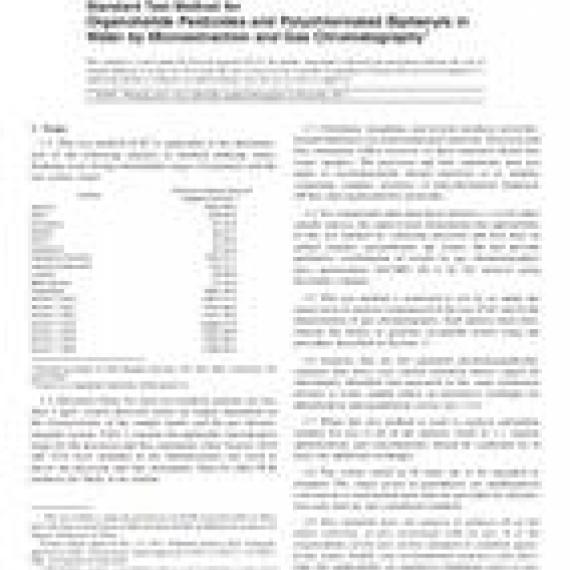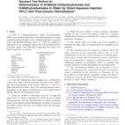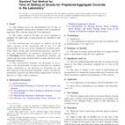No products
ASTM D5175-91(2017)e1
ASTM D5175-91(2017)e1 Standard Test Method for Organohalide Pesticides and Polychlorinated Biphenyls in Water by Microextraction and Gas Chromatography
standard by ASTM International, 12/15/2017
Full Description
1.1This test method (1-3)2 is applicable to the determination of the following analytes in finished drinking water, drinking water during intermediate stages of treatment, and the raw source water:
| Analyte | Chemical Abstract Service | |
| Alachlor | 5972-60-8 | |
| Aldrin | 309-00-2 | |
| Chlordane | 57-74-9 | |
| Dieldrin | 60-57-1 | |
| Endrin | 72-20-8 | |
| Heptachlor | 76-44-8 | |
| Heptachlor Epoxide | 1024-57-3 | |
| Hexachlorobenzene | 118-74-1 | |
| Lindane | 58-89-9 | |
| Methoxychlor | 72-43-5 | |
| Toxaphene | 8001-35-2 | |
| AroclorB 1016 | 12674-11-2 | |
| AroclorB 1221 | 11104-28-2 | |
| AroclorB 1232 | 11141-16-5 | |
| AroclorB 1242 | 53469-21-9 | |
| AroclorB 1248 | 12672-29-6 | |
| AroclorB 1254 | 11097-69-1 | |
| AroclorB 1260 | 11096-82-5 | |
1.2Detection limits for most test method analytes are less than 1 g/L. Actual detection limits are highly dependent on the characteristics of the sample matrix and the gas chromatography system. Table 1 contains the applicable concentration range for the precision and bias statements. Only Aroclor 1016 and 1254 were included in the interlaboratory test used to derive the precision and bias statements. Data for other PCB products are likely to be similar.
(A)Bias=CX.(B)X =Mean recovery.(C)C=True concentration value.(D)St=Overall standard deviation.(E)So=Single analyst standard deviation.1.3Chlordane, toxaphene, and Aroclor products (polychlorinated biphenyls) are multicomponent materials. Precision and bias statements reflect recovery of these materials dosed into water samples. The precision and bias statements may not apply to environmentally altered materials or to samples containing complex mixtures of polychlorinated biphenyls (PCBs) and organochlorine pesticides.
1.4For compounds other than those listed in 1.1 or for other sample sources, the analyst must demonstrate the applicability of this test method by collecting precision and bias data on spiked samples (groundwater, tap water) (4) and provide qualitative confirmation of results by gas chromatography/mass spectrometry (GC/MS) (5) or by GC analysis using dissimilar columns.
1.5This test method is restricted to use by or under the supervision of analysts experienced in the use of GC and in the interpretation of gas chromatograms. Each analyst must demonstrate the ability to generate acceptable results using the procedure described in Section 13.
1.6Analytes that are not separated chromatographically, (analytes that have very similar retention times) cannot be individually identified and measured in the same calibration mixture or water sample unless an alternative technique for identification and quantitation exists (see 13.4).
1.7When this test method is used to analyze unfamiliar samples for any or all of the analytes listed in 1.1, analyte identifications and concentrations should be confirmed by at least one additional technique.
1.8The values stated in SI units are to be regarded as standard. The values given in parentheses are mathematical conversions to inch-pound units that are provided for information only and are not considered standard.
1.9This standard does not purport to address all of the safety concerns, if any, associated with its use. It is the responsibility of the user of this standard to establish appropriate safety, health, and environmental practices and determine the applicability of regulatory limitations prior to use. For specific hazard statements, see Section 9.
1.10This international standard was developed in accordance with internationally recognized principles on standardization established in the Decision on Principles for the Development of International Standards, Guides and Recommendations issued by the World Trade Organization Technical Barriers to Trade (TBT) Committee.


































